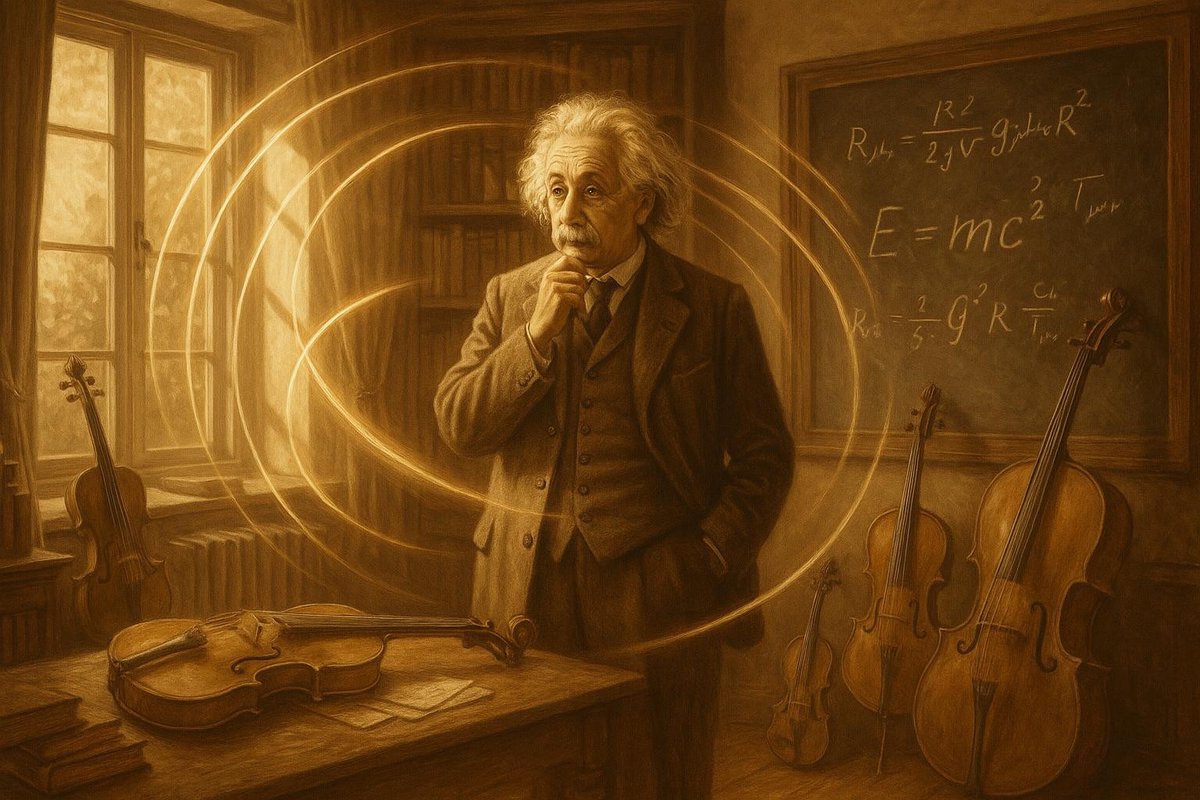
Imagine standing on a serene beach, watching as the sun begins its slow descent, casting a mesmerizing play of light across the water. This spectacle is more than just a beautiful scene—it’s a tangible illustration of a profound truth Albert Einstein revealed over a century ago. His theory of relativity transformed our understanding of space and time, bending them like the fluid notes of a symphony.
When Light Defies Straight Lines
For centuries, light was thought to travel in straight lines, a notion supported by thinkers like Euclid and Newton. However, Einstein dared to ask, “What if space itself could bend?”
- He proposed that massive objects like stars or planets warp the space around them.
- This warping causes light to bend, much like a melody changes direction when encountering obstacles.
Prior theories lacked this ingenious twist. Newton’s laws explained gravity but didn’t account for light’s behavior in a gravitational field. The 1919 solar eclipse became a pivotal moment: photos of starlight bending around the sun validated Einstein’s predictions, captivating the world. This was a time when society yearned for new understanding amid post-war uncertainties, making Einstein’s fresh perspective not just a scientific breakthrough, but a cultural landmark.
The Brilliant Mind Behind the Breakthrough
Einstein’s journey to relativity was as winding as light bending through space. Known for his playful curiosity, he often questioned the assumptions others accepted.
- He visualized riding alongside a photon, an imaginative leap that led to profound insights.
- His iconic equation E=mc² emerged from this playful approach, uniting mass and energy.
Born in 1879, Einstein was part of a world in transition, where classical physics was being questioned. The industrial revolution was in full swing, and Einstein’s theories mirrored this era’s spirit of disruption and innovation. His relativity wasn’t just a scientific triumph but a reflection of a society ready to question and evolve. It was said that he saw the universe not as a static entity, but as a dynamic performance, akin to an orchestra tuning its pitch based on the presence of an audience.
Seeing Is Believing: The Eclipse That Changed Everything
In 1919, scientists Arthur Eddington and Frank Dyson set out to test Einstein’s theory during a solar eclipse. Imagine the anticipation—a world waiting to see if light could truly bend.
- Their observations confirmed Einstein’s predictions, as starlight curved around the sun, visible to all who sought it.
- This event turned Einstein into an overnight sensation, reshaping public perceptions of science.
The eclipse served as proof that the universe was not merely a backdrop for human activity but an intricate web of interactions. This discovery emphasized the interconnectedness of space, time, and gravity. It also inspired a generation of physicists to explore the cosmos with new eyes. Like a symphony’s notes that shift with each performance, the universe was revealed to be a dance of celestial bodies, each influencing the other in a cosmic ballet.
The Legacy of Relativity in a Modern World
In today’s age of technological marvels, Einstein’s relativity remains at the core of many advances.
- Modern GPS systems rely on corrections derived from relativity to provide accurate locations.
- The theory also underpins current research in black holes and the ever-expanding universe.
Einstein’s insights continue to inspire those who dare to question and explore. We see echoes of his work in quantum physics and the search for a unified theory of everything. Like a timeless symphony, relativity has woven itself into the very fabric of our understanding, prompting us to see the universe not as a static painting, but as a dynamic masterpiece in constant motion.
As we reflect on how a single theory reshaped our grasp of reality, we realize the importance of curiosity, creativity, and courage. Einstein’s legacy is a reminder that the universe’s most beautiful secrets often reveal themselves when we dare to look beyond the obvious, much like uncovering the hidden harmonies in a beloved symphony.
Fuel Someone Else’s Curiosity
Feel inspired by the symphony of relativity? Share this article with a friend, or perhaps a budding scientist. Engaging others in the wonders of space and time can spark new ideas and encourage inquisitive minds to explore further. After all, the universe has many more melodies waiting to be discovered. Let’s continue the conversation and see where these cosmic notes lead us next.

Leave a Reply